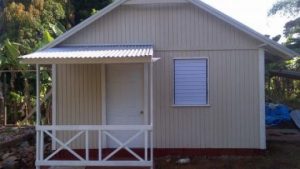
Several concerns are being raised about the cost and standard of houses being built by charity organisation Food for the Poor under a partnership with the government.
The two bedroom board houses are being built under the Housing, Opportunity, Production, Employment (HOPE) programme, which replaced JEEP last year.
Members of Parliament, who on Wednesday morning met with representatives of HOPE during a meeting of Parliament’s Infrastructure and Physical Development Committee expressed dissatisfaction with not only the exorbitant cost of the units, but with what they deem the inferior quality.
Mikael Phillips, Committee Chairman and MP for Manchester North Western, said many of the houses are now overrun by termites, while beneficiaries are forced to contend with unfinished floors and ceilings.
“Sometimes the quality of house that is built is so substandard too that some of our constituents can’t even move in the house immediately because if they don’t get some solitex and put in the roof, cold kill them inside there,” Mr. Phillips highlighted.
Meanwhile, the members of parliament also questioned a request by Food for the Poor for an US$800 increase in the cost per unit.
The Government would be expected to finance half of the increase, while Food for the Poor would supply the remaining US$400.
Lanford Chambers, Project Director in the Ministry of Economic Growth and Job Creation, told the Committee that Food for the Poor said the increase is necessary because of a price hike from overseas suppliers.
But Leslie Campbell, MP for St. Catherine North Eastern, insisted that the units can be built for half the current cost of US$6,400, using labour from the communities which benefit from the programme.
“There’s absolutely no justification for us using the State’s money to build units costing $800,000 or thereabout. So my preference would be for those allocations to be given directly to the members of parliament who can use local labour to achieve better results,” he argued.
The partnership, which started in 2012, is expected to result in the construction of 9,500 low income houses in five years.
Government’s contribution to the project is being funded through a grant from the PetroCaribe Development Fund.
